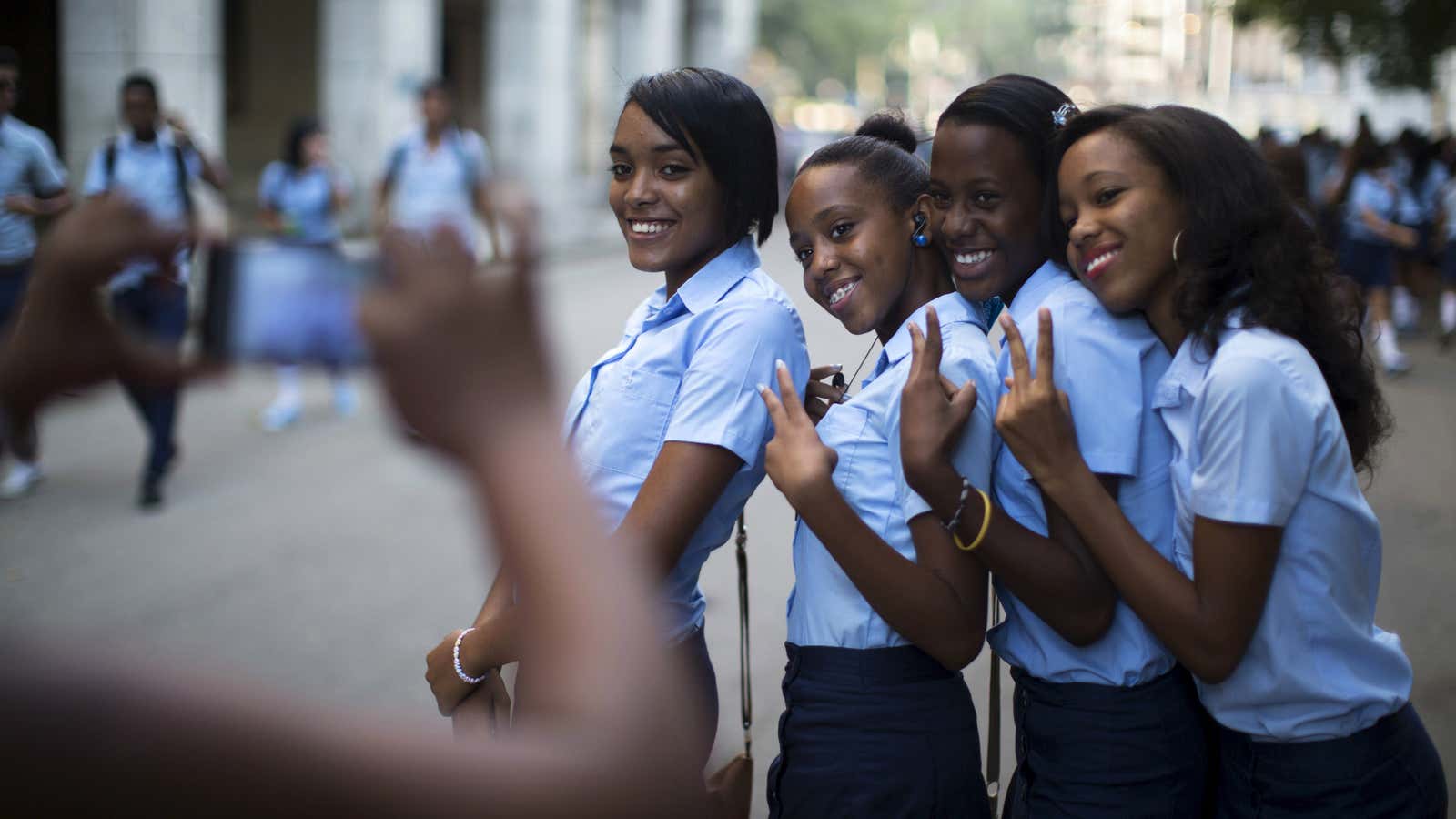After testing 125,000 kids in 52 countries and regions around the world, the OECD came to a somewhat obvious conclusion: girls are better than boys at working together to solve problems. Not only that, but in the first-ever PISA assessment of collaborative problem solving, girls scored higher in every region tested, by an average of 29 points, worth about half a year of schooling. 1
The differences were greatest in Australia, Finland, Latvia, New Zealand and Sweden, where girls score over 40 points higher than boys (on average). The gap was narrowest—at less than 10 points—in Colombia, Costa Rica and Peru.
“There is a huge advantage that girls have on social skills,” said Andreas Schleicher, director for education and skills at the OECD. He noted that in 2012, when PISA tested individual problem-solving, it was the other way around, with boys beating girls.
The test is part of a broader movement inside PISA to analyze what factors—academic, social, emotional and other—predict student success. As educators have expanded what skills and abilities kids need, from math and science and reading to creativity and collaboration, the OECD has produced reams of data on everything from sense of belonging and connectedness to teachers to, now, collaboration between peers.
But solving for how to test individuals on collaboration via a computerized test (which cannot use the internet, so cannot facilitate two students collaborating) is tricky. PISA spent three years building the test, eventually defining collaborative problem solving as “the capacity of an individual to effectively engage in a process whereby two or more agents solve a problem by sharing the understanding and effort required to come up with a solution and pooling their knowledge, skills and efforts to reach that solution.” In the test, one of the agents is the student; the other agents are computerized simulations.
Here’s how the top countries ranked:
As expected, students who do well in science, reading, and mathematics, such as Canada, Japan, Korea, and Singapore, also tend to do well in collaborative problem solving. But some PISA high performers, such as regions of China and Russia, performed poorly on collaborative problem solving. The US and UK, which put in middling performance on academic achievement, did well on collaborative problem solving.
Other noteworthy findings include:
- Strong academic skills do not automatically translate into strong social skills (no surprises there)
- Only 8% of students can solve tasks with a high level of collaboration complexity (not good)
- Students from disadvantaged backgrounds see the value of teamwork more than advantaged students
“In a world that places a growing premium on social skills, education systems need to do much better at fostering those skills systematically across the school curriculum,” OECD Secretary-General Angel Gurría said in a statement.
Interestingly, the test found that schools that used technology the most in the classroom had the lowest collaborative problem solving skills. “It is hard to interpret that data,” said Schleicher. “It could be that technology detracts from social interaction or learning. Other says it is that we are not very good at using technology well.”
